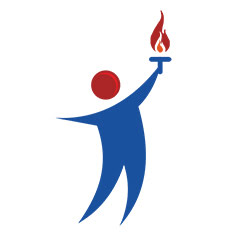
Announcements

Announcements

Meridean Overseas
Updated On 06 November 2023 & Read Time 9 minutes
3.9k
Canada is one of the most popular destinations among international students for studying abroad. Every year, several international students migrate from different countries to Canada in order to gain academic excellence.
Canadian universities offer admissions to international students in three main intakes, namely, September, January and May intakes. While being primary, secondary and tertiary intakes in Canada, the availability of your chosen course being offered in these intakes entirely depends on the university you’re applying to.
In this blog, we will look at all three of these intakes, along with the famous universities and courses of these intakes. So, without any further delays, let’s get to it right away.
Table of Contents
As we learned in the overview, there are three intakes in Canada. If you’re planning to study in Canada, then you must have a sound understanding of all three of these intakes. With this, let’s head on to the table presented below:
|
Overview of the Intakes in Canada |
||
|
Intake |
Month of the Intake |
Details About the Intake |
|
Fall Intake (Primary Intake) |
September-January |
|
|
Winter Intake (Secondary Intake) |
January-May |
|
|
Summer Intake |
May-August |
|
The timeline of intakes is very crucial to keep in mind, and you must prepare for applications accordingly. So, let’s take a look at the timeline of the three intakes in Canada in mind.
|
What to do? |
Fall Intake |
Winter Intake |
Summer Intake |
|
Research the course and the university |
Do it by August to October of the year prior to intake |
Do it by January-April of the year prior to the intake year |
Do it by May of the year prior to the intake year |
|
Start shortlisting universities you wish to apply to. |
Do it by December of the previous year. |
Do it by June – July of the previous year |
Do it by July- August of the previous year |
|
Fulfill all the set eligibility criteria |
Do it by January-February the year applying |
Do it by August of the previous year |
Do it by August -September of the previous year |
|
Application |
Do it before the set deadline of the university |
Do it before the set deadline of the university |
Do it before the set deadline of the university |
|
Apply for a student visa |
As soon as you accept the offer letter and pay the fee and GIC |
As soon as you accept the offer letter and pay the fee and GIC |
As soon as you accept the offer letter and pay the fee and GIC |
Let us take a look at the pros and cons of all three intakes in Canada.
|
Pros and Cons of Fall, Winter and Summer Intakes in Canada |
||
|
Name of the Intake |
Pros |
Cons |
|
September/Fall |
|
|
|
January/Winter |
|
|
|
May/Summer/Spring |
|
|
Embark and excel in your study abroad journey with our expert team!

For students wanting to study in Canada in any of the intakes mentioned above, there are many options to consider. Let’s take a look at the top universities in Canada that you can apply to any of the intakes in the country. They are mentioned below.
University of Toronto
McGill University
University of British Columbia
University of Alberta
University of Waterloo
Western University
University of Montreal
University of Calgary
McMaster University
University of Ottawa
Queen’s University at Kingston
Dalhousie University
Simon Fraser University
University of Victory
University of Saskatchewan
York University
Concordia University
University of Laval
University of Guelph
Memorial University of Newfoundland
University of Windsor
Carleton University
University of Manitoba
University of Brunswick
University of Quebec
University of Northern British Columbia
University of Sherbrooke
Toronto Metropolitan University
University of Regina
Vancouver Island University
Brock University
Ryerson University
Let us look at the top courses to study in Canada in the three intakes mentioned above.
Engineering
Master of Business Administration
Finance
Psychology
Information Technology
Software Engineering
Health Science
Economics
Biological Sciences
Hospitality Management
Mining Engineering
Dentistry
Agriculture
Supply Chain Management
Publishing
Creative Writing
Communications
Digital Marketing
Public Relations
Journalism and Mass Communication
Film Studies
Financial Accounting
Computer Science
In conclusion, Canada is an amazing country to fulfil your study abroad adventures. There are three intakes in Canada, and you can easily choose the one that fits your needs perfectly. Check the availability of your chosen program in the intake you wish to apply to, as some courses are only offered in some particular intakes. Keep the information mentioned in the blog above in mind and plan your study abroad accordingly. We know you’ll do great!
We hope you had fun reading about the intakes in Canada and got some beneficial insights into all three intakes. So, are you also ready to start your study abroad journey to Canada? If yes, then we encourage you to have a word with our team of expert counsellors at Meridean Overseas Education Consultants (MOEC).
If you are unable to travel to our offices, we offer online counselling services via our website. Our dedicated counsellors will provide you with the best guidance regarding your application to study in Canada. Apart from this, our expert counsellors will also provide assistance in the visa process for your successful study abroad journey. Don't hesitate to contact us at application02@meridean.org or call us at 1800-1230-00011.
Q1. Which is the best intake for Canada?
Ans. The September or the Fall intake is the most popular and primary intake in Canada.
Q2. What is the start date of the fall or September intake?
Ans. Every year, the fall intake begins in September and carries on till January end or February start. Regular classes in this intake start in September, and students receive their Letters of Acceptance by April.
Q3. What are the chances of getting admission in the Spring intake in Canada?
Ans. Acceptance in the May/spring intake is highly competitive because few seats are available, and very few universities offer admission. The likelihood of being admitted in the spring intake is low, but it rises dramatically if the applicant has outstanding academic credentials.
Q4. What are the advantages of studying in the summer intake in Canada?
Ans. Beginning studies during the summer intake has several benefits, such as shorter programme lengths, increased flexibility, access to special courses, smaller class sizes, and milder weather.
Q5. What is the deadline for the summer intake in Canada?
Ans. The deadline for the summer intake in Canada depends on the university and the course you’re applying to. Generally, the deadline lies somewhere between December and March. It is best to check on the university website that you’re applying to and plan accordingly.

Contact MOEC Experts for Study Abroad Guidance!
By using our site, you agree to our use of cookies.

Hurry up before admissions close.

